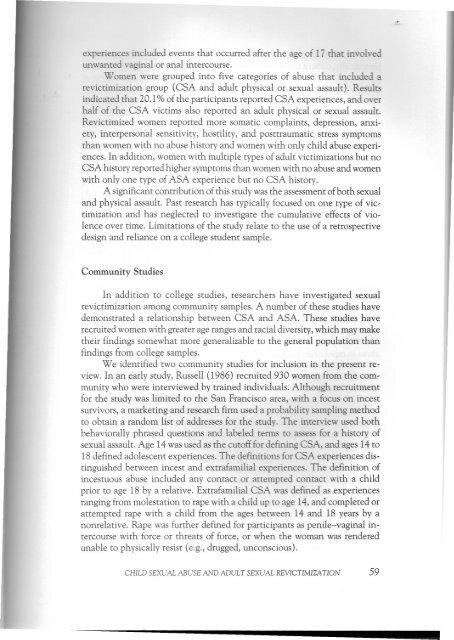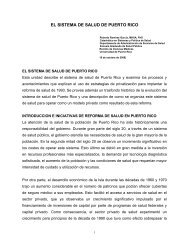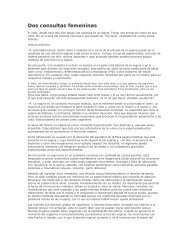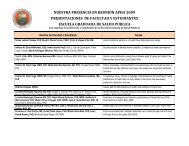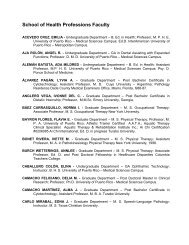CHILD SEXUAL ABUSE AND ADULT SEXUAL REVICTIMIZATION
CHILD SEXUAL ABUSE AND ADULT SEXUAL REVICTIMIZATION
CHILD SEXUAL ABUSE AND ADULT SEXUAL REVICTIMIZATION
You also want an ePaper? Increase the reach of your titles
YUMPU automatically turns print PDFs into web optimized ePapers that Google loves.
experiences included events that occurred after the age of 17 that involved<br />
unwanted vaginal or anal intercourse.<br />
Women were grouped into five categories of abuse that included a<br />
revictimization group (CSA and adult physical or sexual assault). Results<br />
indicated that 20.1% of the participants reported CSA experiences, and over<br />
half of the CSA victims also reported an adult physical or sexual assault.<br />
Revictimized women reported more somatic complaints, depression, anxi~<br />
ety, interpersonal sensitivity, hostility, and posttraumatic stress symptoms<br />
than women with no abusehistory and women with only child abuse experi~<br />
ences. In addition, women with multiple types of adult victimizations but no<br />
CSA history reportedhigher symptomsthan women with no abuseand women<br />
with only one type of ASA experience but no CSA history.<br />
A significant contribution of this studywasthe assessmentof both sexual<br />
and physical assault. Past research has typically focused on one type of vic~<br />
timization and has neglected to investigate the cumulative effects of vio~<br />
lence over time. Limitations of the study relate to the use of a retrospective<br />
design and reliance on a college student sample.<br />
Community Studies<br />
In addition to college studies, researchers have investigated sexual<br />
revictimization among community samples. A number of these studies have<br />
demonstrated a relationship between CSA and ASA. These studies have<br />
recruited women with greater ageranges and racial diversity,which may make<br />
their findings somewhat more generalizable to the general population than<br />
findings from college samples.<br />
We identified two community studies for inclusion in the present re~<br />
view. In an early study, Russell (1986) recruited 930 women from the com,<br />
munity who were interviewed by trained individuals. Although recruitment<br />
for the study was limited to the San Francisco area, with a focus on incest<br />
survivors, a marketing and research firm used a probability sampling method<br />
to obtain a random list of addresses for the study. The interview used both<br />
behaviorally phrased questions and labeled terms to assess for a history of<br />
sexual assault. Age 14wasused as the cutoff for defining CSA, and ages 14 to<br />
18 defined adolescent experiences. The definitions for CSA experiences dis,<br />
tinguished between incest and extrafamilial experiences. The definition of<br />
incestuous abuse included any contact or attempted contact with a child<br />
prior to age 18 by a relative. Extrafamilial CSA was defined as experiences<br />
ranging from molestation to rape with a child up to age 14, and completed or<br />
attempted rape with a child from the ages between 14 and 18 years by a<br />
nonrelative. Rape was further defined for participants as penile-vaginal in,<br />
tercourse with force or threats of force, or when the woman was rendered<br />
unable to physically resist (e.g., drugged, unconscious).<br />
CHIW <strong>SEXUAL</strong> <strong>ABUSE</strong> <strong>AND</strong> <strong>ADULT</strong> <strong>SEXUAL</strong> REVICTIMlZATION 59<br />
..


